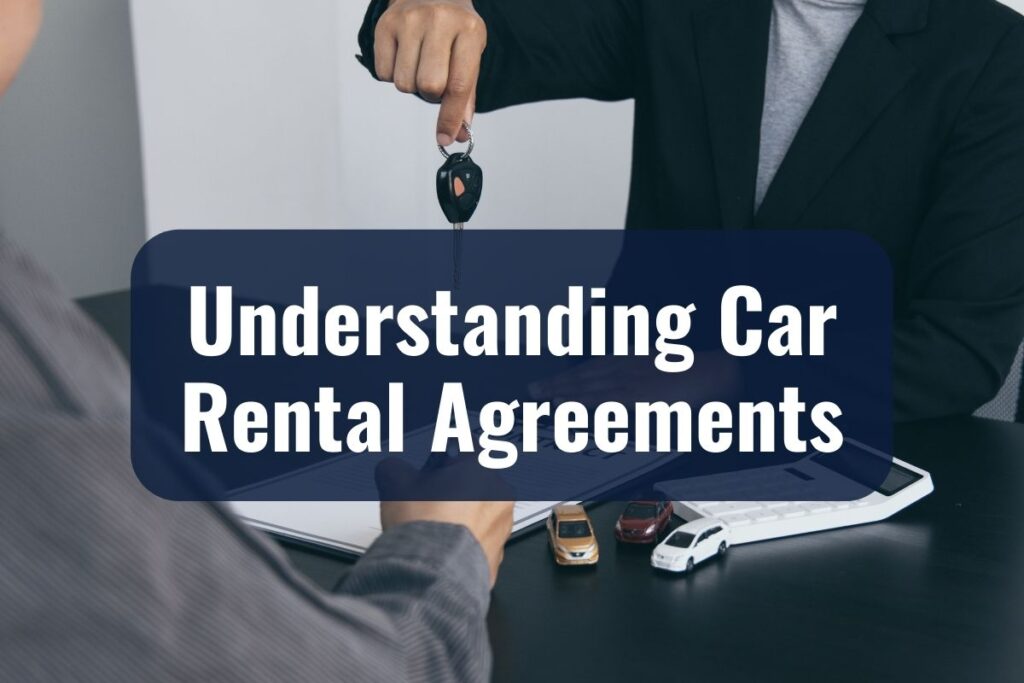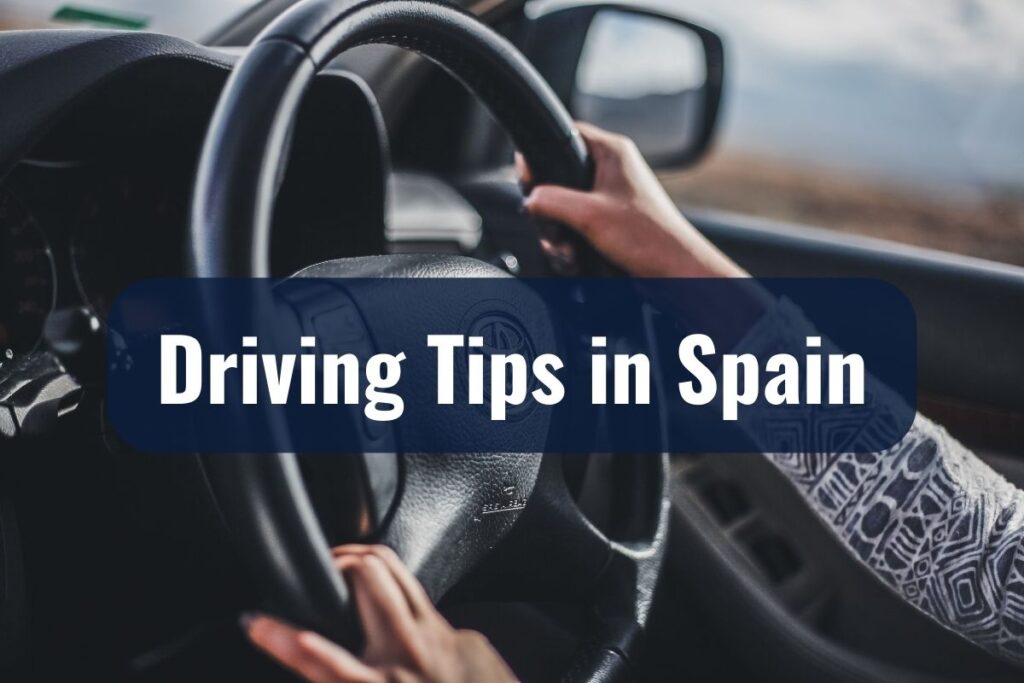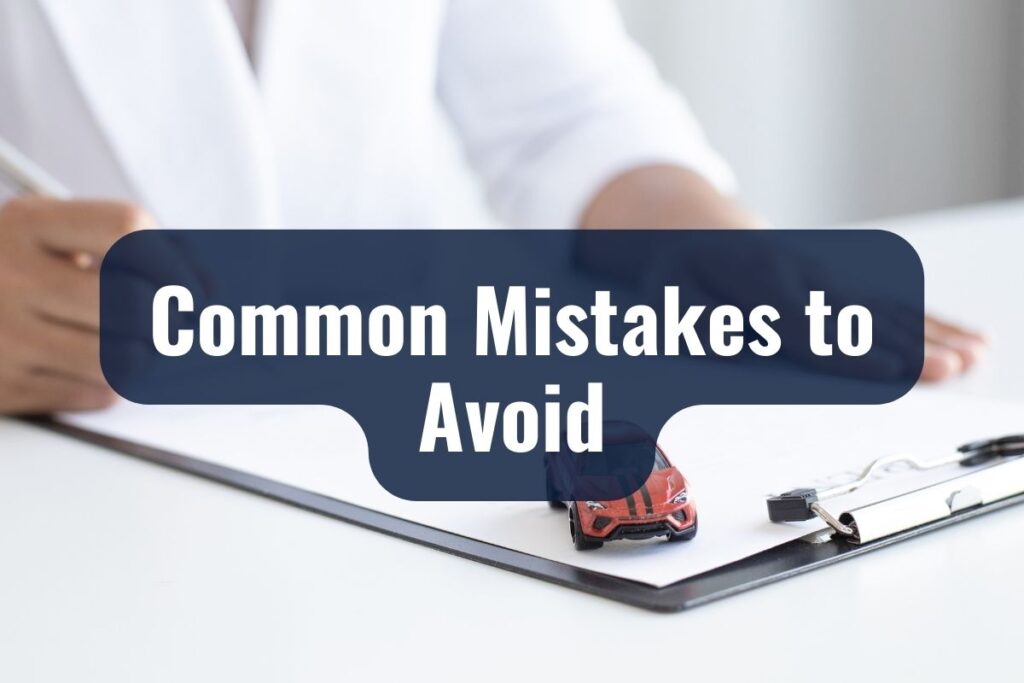Renting a car in Spain not only offers the freedom to explore at your own pace but also opens the door to lesser-known spots that are often missed by traditional tours.
In this guide, we’ll dive into everything you need to know about car rentals in Spain. From understanding local regulations to picking the right vehicle for your journey, we’ve got you covered. So buckle up, and let’s get started on your Spanish road trip adventure.
KEY TAKEAWAYS
- Renting a car in Spain offers the freedom to explore diverse landscapes and cities at your own pace.
- Ensure you meet age requirements, have the necessary documents, and understand the need for an International Driving Permit (IDP) before renting.
- Thoroughly read and understand your rental agreement, paying close attention to terms like “seguro” (insurance) and “kilometraje ilimitado” (unlimited mileage).
- Choose between local and international rental companies, considering their pros and cons, and always check reviews.
- Familiarize yourself with various insurance options, such as CDW and theft protection, to ensure adequate coverage.
- Conduct a pre-rental inspection, understand the fuel policy, and be punctual in returning the car to avoid additional charges.
Requirements for Renting a Car in Spain
Before you set out on your journey through Spain’s picturesque roads, it’s crucial to ensure you meet the requirements set by car rental companies. Spain, like many other countries, has specific criteria for those wishing to rent a vehicle. Here’s what you need to know:
Age Requirements
In Spain, most car rental companies require drivers to be at least 21 years old. However, there are some exceptions:
Young drivers: If you are between the ages of 21 and 24, some companies might allow you to rent a car but often charge a “young driver surcharge.” This fee varies from one company to another.
Upper age limit: A few rental agencies may have an upper age limit, typically set at 70 or 75 years. If you are older than this, it’s advisable to check with the rental company in advance.
Necessary Documents
To ensure a smooth rental process, make sure to have the following documents ready:
Driving License
You must possess a valid driving license. If you’re from an EU country, your standard license will suffice. Non-EU drivers may need additional documentation, as discussed below.
ID/Passport
Your identification, usually a passport, is essential to verify your identity.
Credit Card
A credit card under the driver’s name is typically required. It’s used for the security deposit, and in some cases, to pay for the rental itself. Be sure to check your card’s limit as the deposit can range from a few hundred to over a thousand euros.
International Driving Permit (IDP)
An IDP is a translation of your driving license. Whether or not you’ll need an IDP depends on your country of origin:
- For EU & EEA drivers: If you’re from the European Union or European Economic Area, you don’t need an IDP in Spain.
- For non-EU drivers: If your license is not in Spanish or doesn’t have information in Latin characters, it’s a good idea to get an IDP. It’s an additional assurance for rental companies and local authorities, ensuring they can understand your license details.
To acquire an IDP, you usually need to apply in your home country before arriving in Spain. The process and requirements might differ from one nation to another, so it’s wise to check with your local transportation authority or automobile association.
Understanding Car Rental Agreements

Embarking on a road trip in Spain is exhilarating, but before you do, it’s essential to comprehend the rental agreement you’re entering into. Often, these agreements are lengthy, filled with jargon, and can be in Spanish, making it a challenge for non-native speakers. However, a clear understanding can prevent unforeseen complications or costs down the line.
Reading the Contract
Even if the primary interaction or booking process was in English, the physical agreement handed to you might be in Spanish. While many global rental companies provide bilingual contracts, local firms might not. Here are the steps to take:
Ask for an English Version: Always request an English version of the contract. It’s crucial to understand what you’re agreeing to.
Use Translation Apps: If an English version isn’t available, utilize smartphone translation apps to get the gist of crucial clauses.
Common Terms Translated
Familiarize yourself with some recurring terms in Spanish car rental agreements to navigate them more comfortably:
- Seguro: Insurance
- Franquicia: Deductible or excess
- Kilometraje Ilimitado: Unlimited mileage
- Depósito: Deposit
- Combustible: Fuel
- Daños: Damages
What to Check Before Signing
Here are essential elements to look for and understand in the rental agreement:
- Hidden Fees: Ensure there are no unexpected charges, such as late return fees, airport surcharges, or extra costs for additional drivers.
- Damage Reporting Protocol: Understand the procedure to follow if the car gets damaged. Usually, you’ll need to inform the rental agency immediately and might need to file a police report for significant damages.
- Fuel Policy: Ensure clarity on whether you need to return the car with a full tank, or if you’re being charged upfront for fuel.
- Mileage Limits: If it isn’t “kilometraje ilimitado,” there might be a limit to how many kilometers you can drive without incurring additional fees.
Choosing the Right Car Rental Company
Navigating the world of car rentals can be daunting, especially in a foreign country. Choosing the right car rental company in Spain is paramount to ensuring your trip runs smoothly, without unexpected hiccups or hidden costs. Here’s a roadmap to guide you in making the best choice.
Local vs. International Companies
Both local and international car rental companies have their advantages and drawbacks.
Local Companies
Pros: They often provide competitive rates and a more personalized experience. They might also offer unique vehicles or options that big chains don’t.
Cons: Documentation might be predominantly in Spanish, and they might not have as many pick-up or drop-off locations as bigger companies.
International Companies
Pros: With standardized service and English-speaking staff, recognizable brands can offer peace of mind. They often have multiple locations, making pick-up and return more flexible.
Cons: They might be a bit pricier than their local counterparts and could come with more bureaucratic processes.
Popular and Trusted Companies in Spain
While there are numerous rental companies, some have earned a reputation for reliability and customer satisfaction. These include:
- Europcar: A well-known brand with extensive coverage across Spain.
- Sixt: Known for its premium vehicles and top-notch service.
- Avis/Budget: Reliable options with a good range of cars.
- Local agencies like Goldcar or Centauro: They have garnered attention for their competitive rates.
Always research individual experiences, as they can vary from one location to another, even within the same company.
Utilizing Reviews and Ratings
Word of mouth and previous customers’ experiences can be invaluable.
Online Platforms: Websites like Trustpilot, TripAdvisor, or even Google Reviews can provide insights into others’ experiences with specific rental branches or companies.
Forums and Blogs: Platforms like Lonely Planet forums or travel blogs often have threads or posts about car rentals in Spain. These can give nuanced insights and personal experiences that might not appear on mainstream review platforms.
Insurance Options

Insurance is a pivotal component of the car rental process in Spain, safeguarding you against potential mishaps or unforeseen events. While it might be tempting to opt for the bare minimum, understanding your insurance options can save you from stress, unexpected costs, and complications. Here’s a breakdown of the common insurance types and their implications.
Collision Damage Waiver (CDW)
A CDW isn’t technically insurance but rather a waiver that reduces your financial responsibility to a capped amount if the car is damaged.
What it covers: Damage to the rental vehicle, excluding some parts like tires, undercarriage, or windows, unless specified.
Importance: Without a CDW, you could be responsible for the entire repair cost or even the car’s replacement value.
Theft Protection
Theft protection limits your financial responsibility in the event the rental car is stolen.
What it covers: It reduces the renter’s liability to a set amount (deductible) if the car is stolen. Some policies might also cover damages incurred while attempting theft.
Considerations: In areas or cities known for higher theft rates, this might be a wise choice.
Third-party Liability Insurance
Mandatory in Spain, this insurance is often included in the car rental price.
What it covers: Damages or injuries to other people or their property resulting from an accident where you’re at fault.
Why it’s crucial: It ensures that if you’re involved in an accident harming others or damaging their property, you’re not solely responsible for the ensuing costs.
Personal Accident Insurance (PAI)
PAI covers medical costs for the driver and passengers in the event of an accident.
Benefits: It can supplement your travel or health insurance, ensuring that you or your passengers receive necessary medical attention without massive out-of-pocket expenses.
Considerations: Before opting for PAI, check if your travel or health insurance provides similar coverage to avoid duplication.
When selecting insurance:
- Read the Fine Print: Ensure you understand what is covered and what isn’t, and familiarize yourself with deductibles.
- Check Your Existing Policies: Some credit cards or travel insurance policies might already offer coverage for car rentals. Ensure you’re not paying for duplicate coverage.
- Inquire About Exclusions: Some policies might not cover specific scenarios, such as driving on unpaved roads or damages caused when parking.
Picking Up and Returning the Car
The process of picking up and returning your rental car is more than just a formality; it can significantly influence your rental experience. Being diligent in these steps ensures that you start your Spanish adventure on the right foot and conclude it without any unwelcome surprises.
Pre-rental Inspection
Upon receiving your rental car, conducting a thorough inspection is paramount.
Check for Damages: Examine the car’s exterior and interior for any scratches, dents, or damages. Ensure they are noted in the rental agreement or inspection sheet.
Take Photos: Use your smartphone to capture pictures of the car from various angles, and ensure they are time-stamped. Pay special attention to any pre-existing damages. These photos serve as evidence, should any disputes arise upon return.
Operational Check: Before leaving the lot, check if all lights are functioning, the brakes feel right, and the air conditioning runs smoothly.
Fuel Policies
Different companies might have varying fuel policies. Being clear on this can save you from additional charges.
Full-to-Full: This is the most common policy. You pick up the car with a full tank and return it full. It’s essential to refuel close to the return location to avoid refueling fees.
Full-to-Empty: Some companies might charge you upfront for a full tank and ask you to return the car empty. While this can be convenient, you often end up paying a higher rate for that initial tank than at local gas stations.
Drop-off Locations
Many rental companies have multiple locations, allowing flexibility in where you return the car. However, be aware of potential fees.
Same Location Return: Usually, there’s no additional charge if you return the car to the same location from which you picked it up.
Different Location Return: If you intend to drop off the car at a different location, there might be a “one-way fee.” Ensure you’re aware of any such charges when making your reservation.
Timeliness
Returning the car on time is crucial.
Grace Period: Some companies might offer a grace period (often 30 minutes to an hour), after which late fees apply. It’s best not to rely on this and aim for punctuality.
Drop-off Procedure: Upon return, the car will usually be inspected. Ensure this is done in your presence. If that’s not possible, take photos to document the car’s condition upon return.
Driving Tips in Spain

Spain’s diverse landscapes, from bustling cities to serene coastlines and majestic mountains, make it a delight to explore by road. However, to ensure a smooth driving experience, it’s essential to familiarize yourself with local driving practices and regulations. Here’s a guide to help you navigate the Spanish roads confidently.
Traffic Rules to Be Aware Of
| Traffic Rule | Details |
| Driving Side | Right-hand side of the road |
| Speed Limit (Urban Areas) | 50 km/h |
| Speed Limit (Main Roads) | 90 km/h |
| Speed Limit (Highways) | 100 km/h to 120 km/h (check specific signage) |
| Seat Belts | Mandatory for all passengers (front and rear seats) |
| Alcohol Limit (General) | 0.05% blood alcohol limit |
| Alcohol Limit (New Drivers) | 0.03% blood alcohol limit for drivers with <2 years’ experience |
Drive on the Right: In Spain, traffic flows on the right-hand side of the road. Consequently, overtaking is done on the left.
Speed Limits: Speed limits vary based on the type of road and area:
- Urban Areas: Usually 50 km/h
- Main Roads Outside Urban Areas: 90 km/h
- Highways and Autopistas (motorways): Between 100 km/h and 120 km/h, depending on specific signage.
Seat Belts: Wearing seat belts is mandatory for all passengers, both in the front and rear seats.
Alcohol Limit: The permitted blood alcohol limit is 0.05%. For new drivers (those with licenses for two years or less) and professional drivers, it’s 0.03%. It’s always safest not to drink and drive.
Toll Roads
Identification: Toll roads, known as “autopistas de peaje,” are marked with a blue and white sign. Not all highways are toll roads.
Payment Methods: Tolls can be paid with cash, credit/debit cards, or through electronic systems like Via-T. Ensure you’re in the correct lane based on your payment method.
Costs: Toll fees vary based on the road’s length and the vehicle type. It’s a good idea to keep some cash on hand, especially for shorter toll segments.
Local Driving Customs
Roundabouts: Vehicles inside the roundabout have the right of way unless indicated otherwise. However, always be cautious, as this rule is not always observed, especially in areas with heavy tourist traffic.
Parking: Blue zones (“zona azul”) indicate paid parking. Machines nearby issue tickets, which should be displayed on your dashboard. White zones are usually free to park but always check for signs indicating restrictions.
Flashing Headlights: In Spain, flashing headlights often mean a car intends to overtake or is signaling you to give way.
Rest Stops
Service Areas: Along highways and main roads, you’ll find “áreas de servicio” or service areas, offering fuel, restaurants, and sometimes lodging.
Siesta Time: Remember, in smaller towns, businesses, including some gas stations, may close in the early afternoon for siesta, usually between 2 pm and 5 pm.
Additional Tips for a Smooth Rental Experience
While we’ve covered the essentials of car rentals in Spain, a few additional pointers can further refine your experience. These tips, while simple, can make a significant difference, ensuring your road trip through Spain remains hassle-free and memorable.
Benefits of Early Booking
Cost-Effective: Booking your rental car in advance, especially during peak tourist seasons, can secure better rates.
Wider Selection: Early bookings usually mean a broader range of available vehicles, letting you choose the perfect fit for your journey.
Preparation Time: Knowing your rental details ahead of time allows for better itinerary planning and aligning other travel arrangements.
Considering Additional Drivers
Sharing the Load: If traveling long distances or for extended periods, having more than one registered driver can be beneficial. It ensures everyone gets a break, reducing fatigue.
Fees and Requirements: While adding a driver can be convenient, be aware that some rental agencies may charge extra for this service. The secondary driver will also need to present their driving license and meet the agency’s criteria.
Child Seats and GPS
Safety First: If traveling with young children, ensure you either rent a child safety seat or bring your own. Spanish law requires children under 135 cm in height to use a child restraint system appropriate for their size and weight.
Navigational Aid: While many people rely on smartphone navigation apps, having a dedicated GPS can be useful. It can be especially handy in areas with weak mobile reception. Rental companies often offer GPS devices, but ensure you’re comfortable with its interface and language settings.
Check for Seasonal Offers or Deals
Promotional Discounts: Some rental companies may offer seasonal deals, especially during off-peak times. Keep an eye out for these promotions.
Loyalty Programs: If you frequently rent cars, consider joining a loyalty program. Over time, this can lead to discounted rates or free upgrades.
Understand Local Traffic News and Updates
Stay Informed: Before heading out, especially on long drives, check for any road closures, construction updates, or special events that might affect traffic.
Apps and Websites: Utilize local traffic news websites or apps like Waze to get real-time updates.
Common Mistakes to Avoid

Venturing through Spain by car can be an enthralling experience, but several common oversights can potentially dampen the journey. By being aware of these pitfalls, you can proactively sidestep them, ensuring your Spanish road trip is as smooth as possible.
Not Checking the Car for Damages Before Leaving
Why it’s a mistake: Departing without documenting pre-existing damages can lead to disputes when returning the vehicle. You might be held liable for damages you didn’t cause.
Solution: Always conduct a thorough inspection and take time-stamped photographs before driving off. Ensure any damages are noted in the rental agreement.
Forgetting to Ask About Toll Devices
Why it’s a mistake: Not all rental cars come equipped with electronic toll payment systems. Without them, you might end up in toll lanes without a way to pay.
Solution: Inquire if your rental car has an electronic toll device. If not, understand where and how to pay for tolls manually.
Failing to Understand the Fuel Policy
Why it’s a mistake: Misunderstanding the fuel policy can result in additional fees. For example, returning a car with less fuel than required by a “Full-to-Full” policy can lead to refueling charges at potentially inflated rates.
Solution: Clarify the fuel policy upon renting and adhere to it. Refuel at a local gas station if you need to return the car with a full tank.
Overlooking Insurance Details
Why it’s a mistake: Assuming you have full coverage without checking the specifics can be costly in case of accidents or damages.
Solution: Discuss the insurance details with the rental agent. Understand your liabilities and consider purchasing additional insurance if necessary.
Not Familiarizing Yourself with Local Driving Laws
Why it’s a mistake: Differences in driving regulations can lead to unintentional violations, resulting in fines or safety risks.
Solution: Before setting out, take a moment to acquaint yourself with basic Spanish driving laws, such as speed limits, parking regulations, and roundabout rules.
Neglecting to Check Operating Hours
Why it’s a mistake: Especially in smaller towns, businesses, including rental agencies and gas stations, might close for siesta or have shorter operating hours.
Solution: Familiarize yourself with the operating hours of crucial stops and plan your journey accordingly.
Avoiding these common missteps is not just about dodging inconveniences or additional costs. It’s about ensuring your road trip through Spain remains a cherished memory, where the focus stays on the breathtaking landscapes, intriguing destinations, and the thrill of the journey itself. Safe travels!


